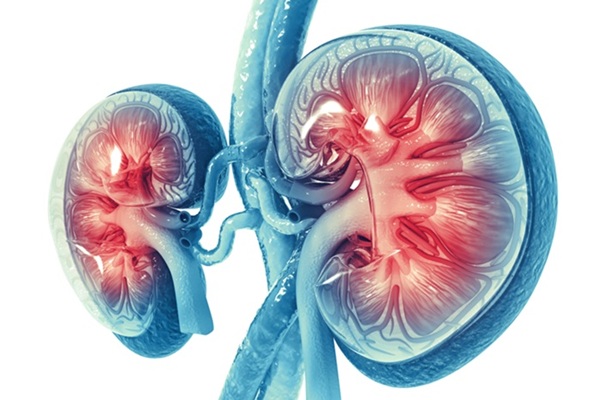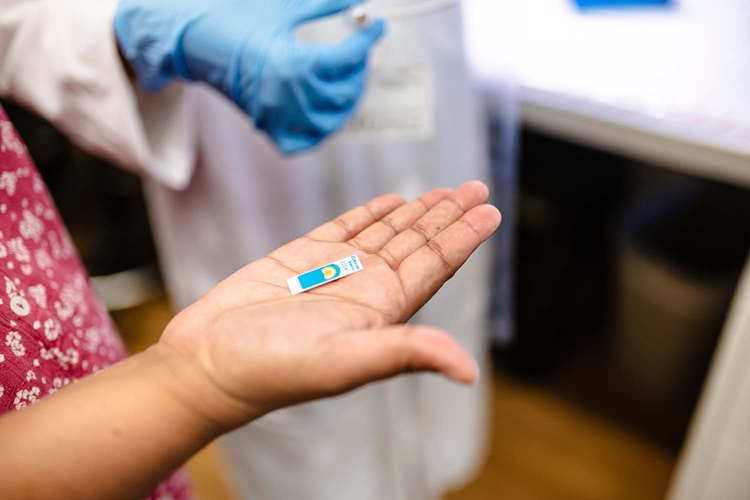Roche Launches Digital Pathology Image Analysis Algorithms for Precision Patient Diagnosis in Breast Cancer
|
By LabMedica International staff writers Posted on 13 Jan 2021 |
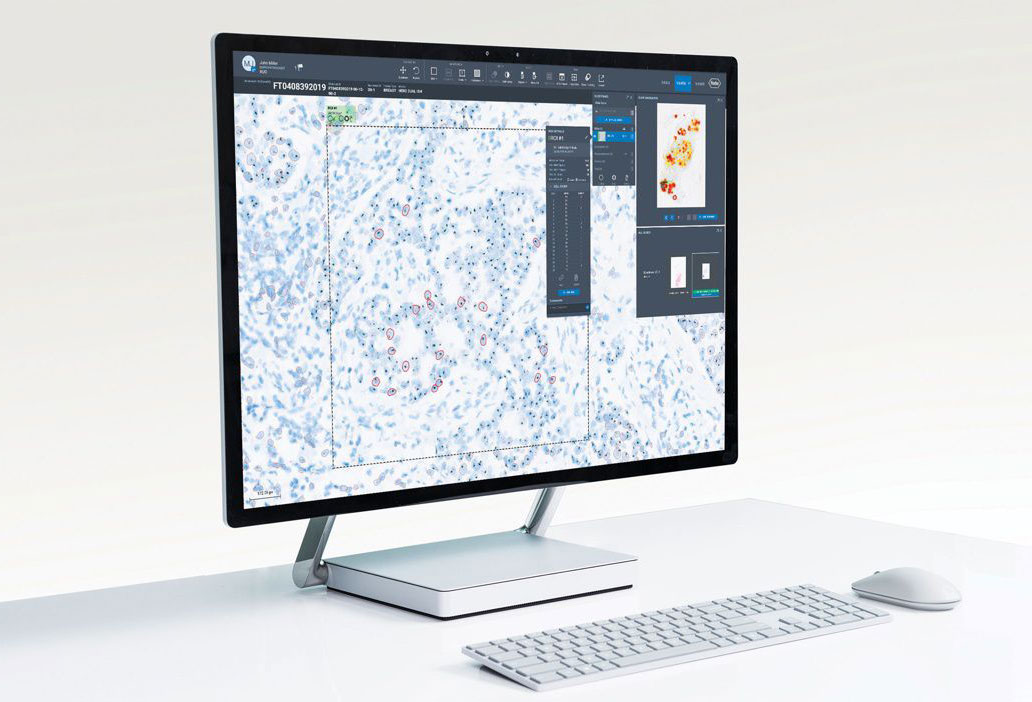
Image: uPath HER2 Dual ISH image analysis for breast cancer (Photo courtesy of Roche)
Roche (Basel, Switzerland) has announced the CE-IVD launch of its automated digital pathology algorithms, uPath HER2 (4B5) image analysis and uPath Dual ISH image analysis for breast cancer to help determine the best treatment strategy for each patient.
The image analysis algorithms use artificial intelligence (AI) to support pathologists in making faster, more accurate patient diagnoses in breast cancer. A mutation in the HER2 gene, which occurs in as many as 20% of the 2.1 million cases of breast cancer diagnosed globally each year, is responsible for aggressive growth in some patients. Identifying this mutation is important in determining which patients may benefit from targeted treatment. uPath HER2 (4B5) image analysis for breast cancer helps pathologists to quickly determine whether tumors are positive for the HER2 biomarker, highlighting positively stained tumor cell membranes with a clear visual overlay for easy reference.
uPath HER2 Dual ISH image analysis for breast cancer assists the pathologist in the determination of HER2 gene amplification. A heatmap is provided to guide pathologists to areas of interest where the algorithm can identify cells to inform the determination of a treatment strategy. Validated on the VENTANA HER2 (4B5) assay and the VENTANA HER2 Dual ISH DNA Probe Cocktail, the algorithms are ready-to-use and integrated within the Roche uPath enterprise software.
The uPath HER2 (4B5) image analysis and uPath HER2 Dual ISH image analysis algorithms for breast cancer expand Roche’s digital pathology portfolio to empower precision diagnosis. The uPath image analysis algorithm suite for pathology decision support offers ready-to-use image analysis tools, providing fast, consistent and automated analysis so that pathologists can quickly, accurately and confidently assess immunohistochemistry and in situ hybridization. All algorithms in the suite for uPath software will provide image analysis of VENTANA DP 200 scanned slide images stained with a Roche Tissue Diagnostics assay.
“About 15 to 20% of women diagnosed with breast cancer are HER2 positive, which makes fast and accurate diagnosis critical,” said Thomas Schinecker, CEO Roche Diagnostics. “Roche is continuing to innovate in HER2 diagnostics by providing precise information through image analysis algorithms for pathology decision support.”
The image analysis algorithms use artificial intelligence (AI) to support pathologists in making faster, more accurate patient diagnoses in breast cancer. A mutation in the HER2 gene, which occurs in as many as 20% of the 2.1 million cases of breast cancer diagnosed globally each year, is responsible for aggressive growth in some patients. Identifying this mutation is important in determining which patients may benefit from targeted treatment. uPath HER2 (4B5) image analysis for breast cancer helps pathologists to quickly determine whether tumors are positive for the HER2 biomarker, highlighting positively stained tumor cell membranes with a clear visual overlay for easy reference.
uPath HER2 Dual ISH image analysis for breast cancer assists the pathologist in the determination of HER2 gene amplification. A heatmap is provided to guide pathologists to areas of interest where the algorithm can identify cells to inform the determination of a treatment strategy. Validated on the VENTANA HER2 (4B5) assay and the VENTANA HER2 Dual ISH DNA Probe Cocktail, the algorithms are ready-to-use and integrated within the Roche uPath enterprise software.
The uPath HER2 (4B5) image analysis and uPath HER2 Dual ISH image analysis algorithms for breast cancer expand Roche’s digital pathology portfolio to empower precision diagnosis. The uPath image analysis algorithm suite for pathology decision support offers ready-to-use image analysis tools, providing fast, consistent and automated analysis so that pathologists can quickly, accurately and confidently assess immunohistochemistry and in situ hybridization. All algorithms in the suite for uPath software will provide image analysis of VENTANA DP 200 scanned slide images stained with a Roche Tissue Diagnostics assay.
“About 15 to 20% of women diagnosed with breast cancer are HER2 positive, which makes fast and accurate diagnosis critical,” said Thomas Schinecker, CEO Roche Diagnostics. “Roche is continuing to innovate in HER2 diagnostics by providing precise information through image analysis algorithms for pathology decision support.”
Latest Industry News
- Abbott Acquires Cancer-Screening Company Exact Sciences
- Roche and Freenome Collaborate to Develop Cancer Screening Tests
- Co-Diagnostics Forms New Business Unit to Develop AI-Powered Diagnostics
- Qiagen Acquires Single-Cell Omics Firm Parse Biosciences
- Puritan Medical Products Showcasing Innovation at AMP2025 in Boston
- Advanced Instruments Merged Under Nova Biomedical Name
- Bio-Rad and Biodesix Partner to Develop Droplet Digital PCR High Complexity Assays
- Hologic to be Acquired by Blackstone and TPG
- Bio-Techne and Oxford Nanopore to Accelerate Development of Genetics Portfolio
- Terumo BCT and Hemex Health Collaborate to Improve Access to Testing for Hemoglobin Disorders
- Revvity and Sanofi Collaborate on Program to Revolutionize Early Detection of Type 1 Diabetes
- GSI Group Acquires Blood Processing Equipment Manufacturer GenesisBPS
- ELITech and Hitachi High-Tech to Develop Automated PCR Testing System for Infectious Diseases
- Lumiquick Acquires Aoxre to Expand Global IVD and Research Capabilities
- Lunit and Agilent Partner to Develop AI-Powered Cancer Diagnostics
- Qiagen and Oxford Gene Technology Partner on Sequencing Panel Interpretation
Channels
Clinical Chemistry
view channel
Chemical Imaging Probe Could Track and Treat Prostate Cancer
Prostate cancer remains a leading cause of illness and death among men, with many patients eventually developing resistance to standard hormone-blocking therapies. These drugs often lose effectiveness... Read more
Mismatch Between Two Common Kidney Function Tests Indicates Serious Health Problems
Creatinine has long been the standard for measuring kidney filtration, while cystatin C — a protein produced by all human cells — has been recommended as a complementary marker because it is influenced... Read moreMolecular Diagnostics
view channel
Simple Urine Test to Revolutionize Bladder Cancer Diagnosis and Treatment
Bladder cancer is one of the most common and deadly urological cancers and is marked by a high rate of recurrence. Diagnosis and follow-up still rely heavily on invasive cystoscopy or urine cytology, which... Read more
Blood Test to Enable Earlier and Simpler Detection of Liver Fibrosis
Persistent liver damage caused by alcohol misuse or viral infections can trigger liver fibrosis, a condition in which healthy tissue is gradually replaced by collagen fibers. Even after successful treatment... Read moreHematology
view channel
Platelet Activity Blood Test in Middle Age Could Identify Early Alzheimer’s Risk
Early detection of Alzheimer’s disease remains one of the biggest unmet needs in neurology, particularly because the biological changes underlying the disorder begin decades before memory symptoms appear.... Read more
Microvesicles Measurement Could Detect Vascular Injury in Sickle Cell Disease Patients
Assessing disease severity in sickle cell disease (SCD) remains challenging, especially when trying to predict hemolysis, vascular injury, and risk of complications such as vaso-occlusive crises.... Read more
ADLM’s New Coagulation Testing Guidance to Improve Care for Patients on Blood Thinners
Direct oral anticoagulants (DOACs) are one of the most common types of blood thinners. Patients take them to prevent a host of complications that could arise from blood clotting, including stroke, deep... Read moreImmunology
view channel
New Test Distinguishes Vaccine-Induced False Positives from Active HIV Infection
Since HIV was identified in 1983, more than 91 million people have contracted the virus, and over 44 million have died from related causes. Today, nearly 40 million individuals worldwide live with HIV-1,... Read more
Gene Signature Test Predicts Response to Key Breast Cancer Treatment
DK4/6 inhibitors paired with hormone therapy have become a cornerstone treatment for advanced HR+/HER2– breast cancer, slowing tumor growth by blocking key proteins that drive cell division.... Read more
Chip Captures Cancer Cells from Blood to Help Select Right Breast Cancer Treatment
Ductal carcinoma in situ (DCIS) accounts for about a quarter of all breast cancer cases and generally carries a good prognosis. This non-invasive form of the disease may or may not become life-threatening.... Read moreMicrobiology
view channel
Rapid Diagnostic Test Matches Gold Standard for Sepsis Detection
Sepsis kills 11 million people worldwide every year and generates massive healthcare costs. In the USA and Europe alone, sepsis accounts for USD 100 billion in annual hospitalization expenses.... Read moreRapid POC Tuberculosis Test Provides Results Within 15 Minutes
Tuberculosis remains one of the world’s deadliest infectious diseases, and reducing new cases depends on identifying individuals with latent infection before it progresses. Current diagnostic tools often... Read more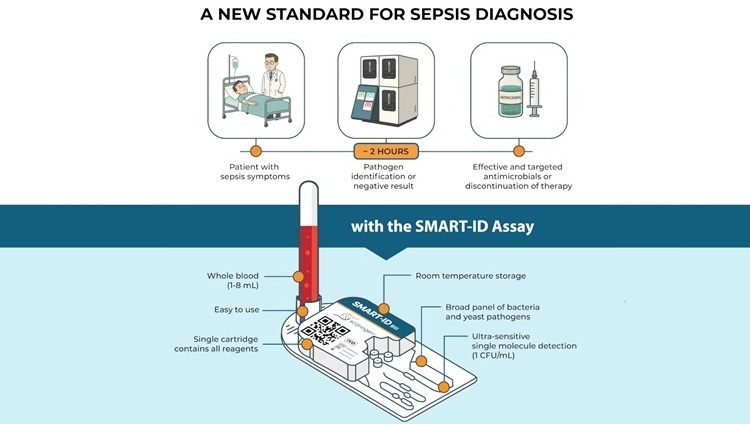
Rapid Assay Identifies Bloodstream Infection Pathogens Directly from Patient Samples
Bloodstream infections in sepsis progress quickly and demand rapid, precise diagnosis. Current blood-culture methods often take one to five days to identify the pathogen, leaving clinicians to treat blindly... Read morePathology
view channel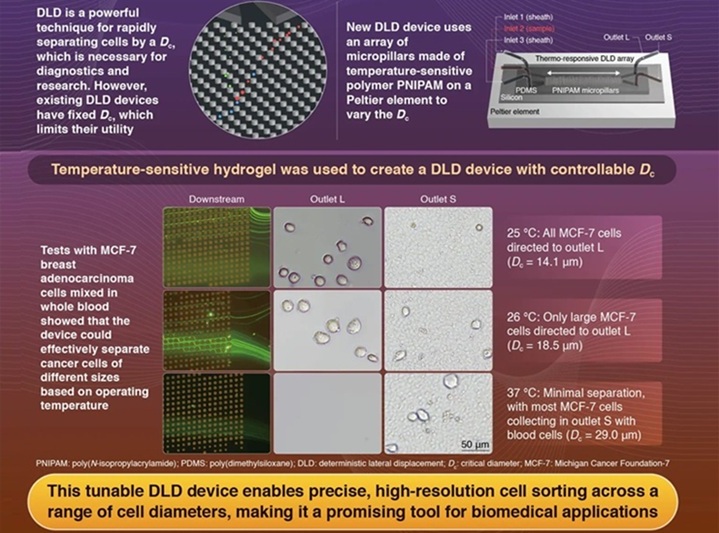
Tunable Cell-Sorting Device Holds Potential for Multiple Biomedical Applications
Isolating rare cancer cells from blood is essential for diagnosing metastasis and guiding treatment decisions, but remains technically challenging. Many existing techniques struggle to balance accuracy,... Read moreAI Tool Outperforms Doctors in Spotting Blood Cell Abnormalities
Diagnosing blood disorders depends on recognizing subtle abnormalities in cell size, shape, and structure, yet this process is slow, subjective, and requires years of expert training. Even specialists... Read moreTechnology
view channel
Artificial Intelligence Model Could Accelerate Rare Disease Diagnosis
Identifying which genetic variants actually cause disease remains one of the biggest challenges in genomic medicine. Each person carries tens of thousands of DNA changes, yet only a few meaningfully alter... Read more












